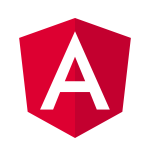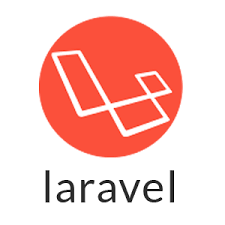Looking to stay ahead in 2023? Our deep dive into this year's top web application frameworks offers you the insights you've been seeking.
More...
Web application frameworks have become the cornerstone of modern web development. Software developers are leaning more into these frameworks to build scalable, responsive, and robust web applications.
The year 2023 has ushered in a plethora of powerful web application frameworks, and here we'll delve into some of the best ones to keep an eye on.
What is a Web Application Framework?
At its core, a web application framework is a software framework designed to aid in the development of web applications, web services, and web resources. These frameworks provide a standardized way to build and deploy web applications on the World Wide Web. What sets them apart is their structured and modular approach, allowing software developers and engineers to focus on creating the application's unique features instead of delving into the nitty-gritty of underlying protocols and algorithms.
Best Frameworks for Web Applications in 2023
Angular

Where it comes from: JavaScript/TypeScript
Why it is used: Angular, one of the great web app frameworks, provides a comprehensive solution for frontend web development, especially for large-scale, complex applications. It offers two-way data binding, which automatically synchronizes data between the model and view components.
Why developers love it: Angular's modular architecture, powerful CLI (Command Line Interface), and extensive libraries facilitate rapid development and testing. The documentation and community support are HHHHHHHH.
Kinds of projects: Perfect for building large-scale enterprise applications, e-commerce platforms, dynamic web apps, and Single Page Applications (SPAs).
React

Where it comes from: JavaScript
Why it is used: React’s component-based architecture makes UI development more modular and manageable amongst web app frameworks. The virtual DOM ensures efficient updates and rendering.
Why developers love it: Ease of component reusability, vibrant ecosystem, and a rich set of tools (like React Dev Tools) streamline the development process.
Kinds of projects: Social media platforms, e-commerce sites, dynamic web apps, and interfaces requiring real-time data updates.
Vue.js

Where it comes from: JavaScript
Why it is used: Vue.js offers a simple integration process, making it ideal for both single-page applications and more complex web interfaces.
Why developers love it: Vue’s gentle learning curve, comprehensive documentation, and reactive data binding make it a developer-friendly web app framework.
Kinds of projects: Interactive UIs, single-page applications, and small to medium-sized web apps.
Laravel

Where it comes from: PHP
Why it is used: Laravel offers elegant syntax and a rich set of tools for tasks like routing, sessions, and caching, accelerating backend web application development.
Why developers love it: Features like Eloquent ORM, Laravel Mix, and Blade templating engine simplify complex tasks.
Kinds of projects: E-commerce platforms, content management systems, RESTful APIs, and enterprise-level applications.
Django

Where it comes from: Python
Why it is used: Django promotes the rapid development of secure and maintainable web applications, providing an admin panel and database interfaces out-of-the-box.
Why developers love it: The “batteries-included” philosophy ensures a myriad of functionalities without needing third-party tools.
Kinds of projects: Content management systems, scientific computing platforms, and platforms requiring robust database functionalities.
Other Web Application Frameworks
Ruby on Rails
Where it comes from: Ruby
Why it is used: Rails champions the convention over configuration (CoC) and Don't Repeat Yourself (DRY) principles, which minimizes redundant tasks.
Why developers love it: The active record ORM, predefined directory structure, and migrations facilitate smooth development. The Gem ecosystem offers numerous solutions for common tasks.
Kinds of projects: E-commerce sites, content management systems, social networking platforms, and SaaS applications.
Node.js

Where it comes from: JavaScript
Why it is used: Node.js enables server-side JavaScript execution, making it apt for real-time, scalable network applications.
Why developers love it: Its non-blocking I/O model ensures efficient performance. The vast npm (node package manager) ecosystem offers modules for almost any functionality.
Kinds of projects: Real-time chat applications, collaborative tools, gaming servers, and streaming platforms.
ASP.Net Core

Where it comes from: C#
Why it is used: ASP.Net Core offers cross-platform capabilities, high performance, and robustness for web application development.
Why developers love it: Middleware components, dependency injection, and a rich set of libraries and tools enhance productivity.
Kinds of projects: Enterprise solutions, e-commerce platforms, content delivery networks, and Fintech platforms.

The Role of Web Application Frameworks in Fintech
Fintech, or financial technology, has disrupted the traditional banking sector with its innovative solutions. At the heart of this revolution are web application frameworks that power these digital financial tools.
For instance, Django's robust security features make it an excellent choice for fintech applications that require secure transactions and data protection. Similarly, React’s component-based architecture is often leveraged to build responsive fintech dashboards.
Both web app frameworks should be on the bucketlist of all software developers.
The Rise of Progressive Web Application Frameworks
Progressive Web Applications (PWAs) represent a major shift in web development, merging the best qualities of traditional web apps with native mobile applications. These apps are notable for their:
- 1Responsive Design: Ensuring a consistent user experience across devices, from desktops to mobiles.
- 2Offline Capabilities: Using service workers, they function even without an active internet connection.
- 3Push Notifications: PWAs can engage users with real-time notifications.
- 4Safety: Always served via HTTPS, ensuring data integrity and security.
Web app frameworks have been pivotal in facilitating PWAs. Vue.js has emerged as a favorite due to its ease of use and performance, particularly for PWA development. It simplifies the process, managing essential elements like service workers and manifest files.
However, other frameworks, such as Angular and React, also support PWA features.
In essence, PWAs are not just a fleeting trend but a testament to the evolving digital landscape, offering immersive, app-like experiences on the web.
Whether you are a seasoned developer or just getting started, understanding the capabilities and features of these frameworks is crucial. 2023 is set to be an exciting year for web development, and the mentioned frameworks are leading the charge.
